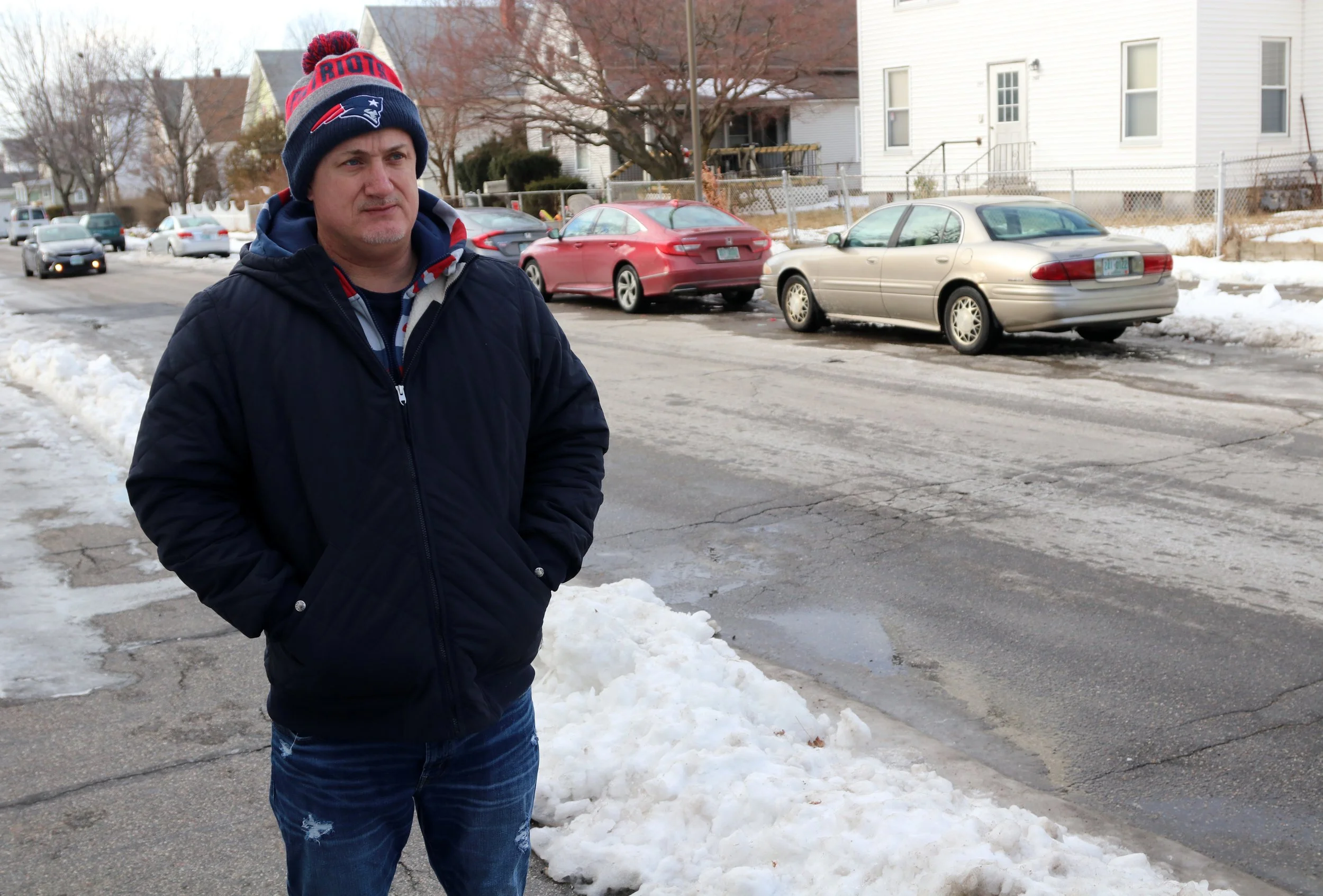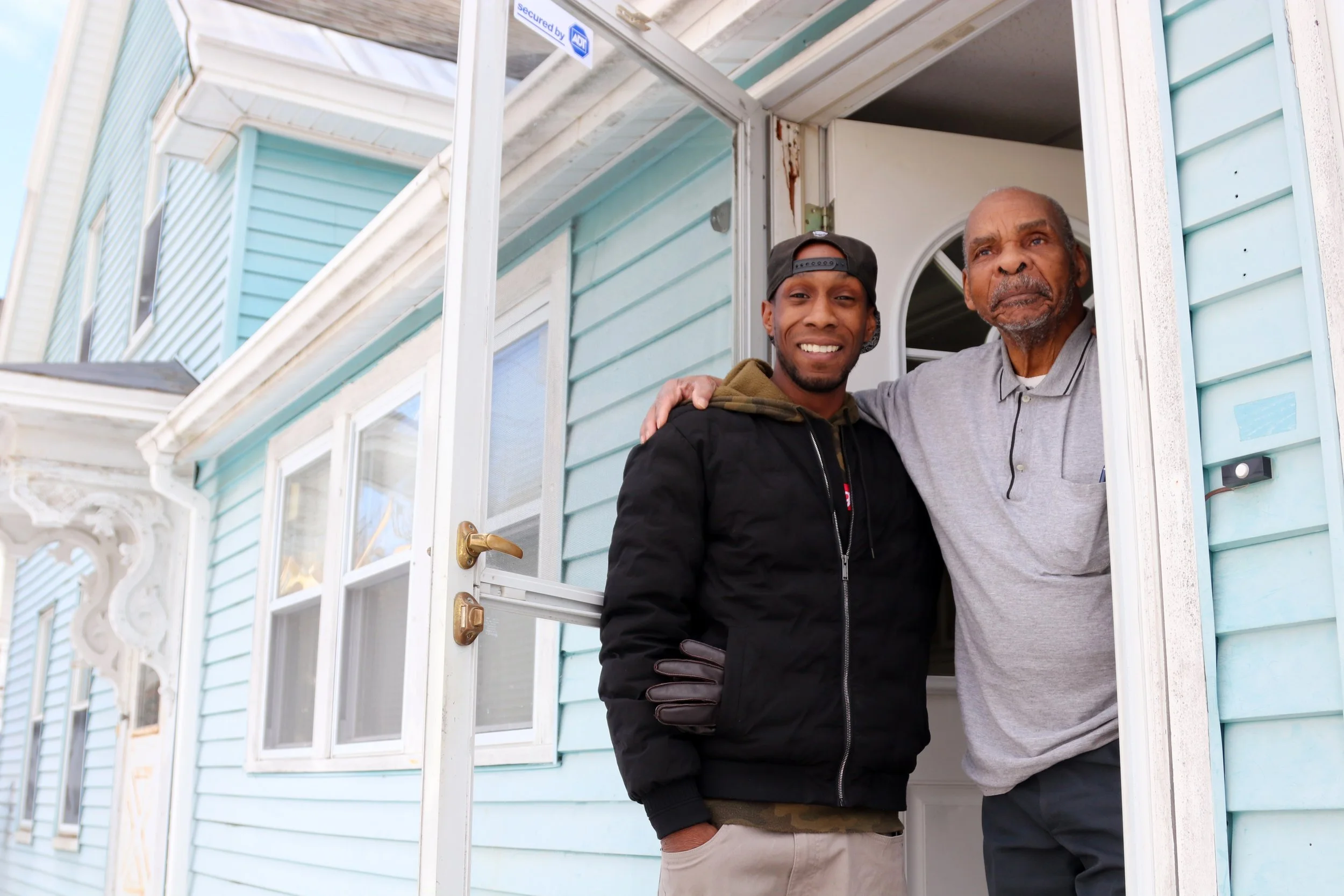Carl Connor tries his best to share the wisdom and love he rarely got from grown-ups when he was young, and which he regrets not being around to give to his own son, to disadvantaged youths starting to get into trouble in the Queen City. After Jaden’s death, Connor became a Street Outreach Worker for the non-profit MYTURN and its Project Connect program, which seeks to support young people, divert them from the justice system and set them up for success. Outreach workers like Connor mentor troubled youths and try to keep them from potential run-ins with the law.
The Evolution of ‘Hot Spot’ Policing
Joseph Lascaze grew up in Manchester with relatives who emigrated from Haiti. He remembers dribbling soccer balls with his cousins outside his uncle’s house on Laurel Street, playing basketball with friends at Pulaski Park and visiting a Union Street store for its Latin soft drinks after church. Nearly everywhere he went, he would see police scouring the center city.
Building by building, block by block: Neighborhood Group Works to build Community
Is there a relationship between zoning and crime?
The persistence of center city’s crime issues is easy to spot in the last decade of crime data from the Manchester Police Department (MPD). According to the collaborative’s analysis of calls for police service between 2006 and 2020, the number of crimes reported per resident was significantly higher in center city than anywhere else in Manchester (see map). Compared to the suburbs in northwestern and northeastern Manchester, parts of center city reported roughly five times as many calls for service.
Invisible Walls: Many Refugees are Funneled into a Few Manchester Neighborhoods
Invisible Walls: Restrictive zoning and homelessness
Homelessness, like high blood pressure or family wealth, is often inherited by the next generation. That’s the sad reality Stacie Pickford Baez of Jaffrey found herself in as soon as she reached adulthood. To Baez, it seemed like everything in her youth made her destined to bounce from friend’s couch to friend’s couch for years.
The State We're In - Invisible Walls: Loan Practices
This week, The State We’re In host Melanie Plenda discusses the data available surrounding loan practices, whether or not they are discriminatory, and what that means for residents and communities in New Hampshire. To discuss the details are three journalists who've been working on a series about housing and equity in New Hampshire: Jeff Feingold, editor of the New Hampshire Business Review; Granite State News Collaborative data and research editor Johnny Bassett; and reporter David Solomon.
Banks say HUD data only tells part of the story
Banks have a simple answer when confronted with high denial rates for Hispanic mortgage applicants: You don’t know the whole story.
So many factors go into consideration of a mortgage, refinance or home equity loan that bank officials say it is difficult to find two equally situated applicants, one white and one Hispanic, to prove discrimination.
Invisible Walls: Discriminatory home lending persists in New Hampshire
Wellington cites many factors as contributing to the concentration of the state’s minority populations in these ethnic enclaves. Marking certain neighborhoods as undesirable for mortgage loans, a practice known as redlining, was banned in 1965, but its legacy remains a factor in Manchester. The phenomenon of “white flight” from the inner city has been well-documented. Zoning that restricts multifamily housing is widespread throughout the state.








